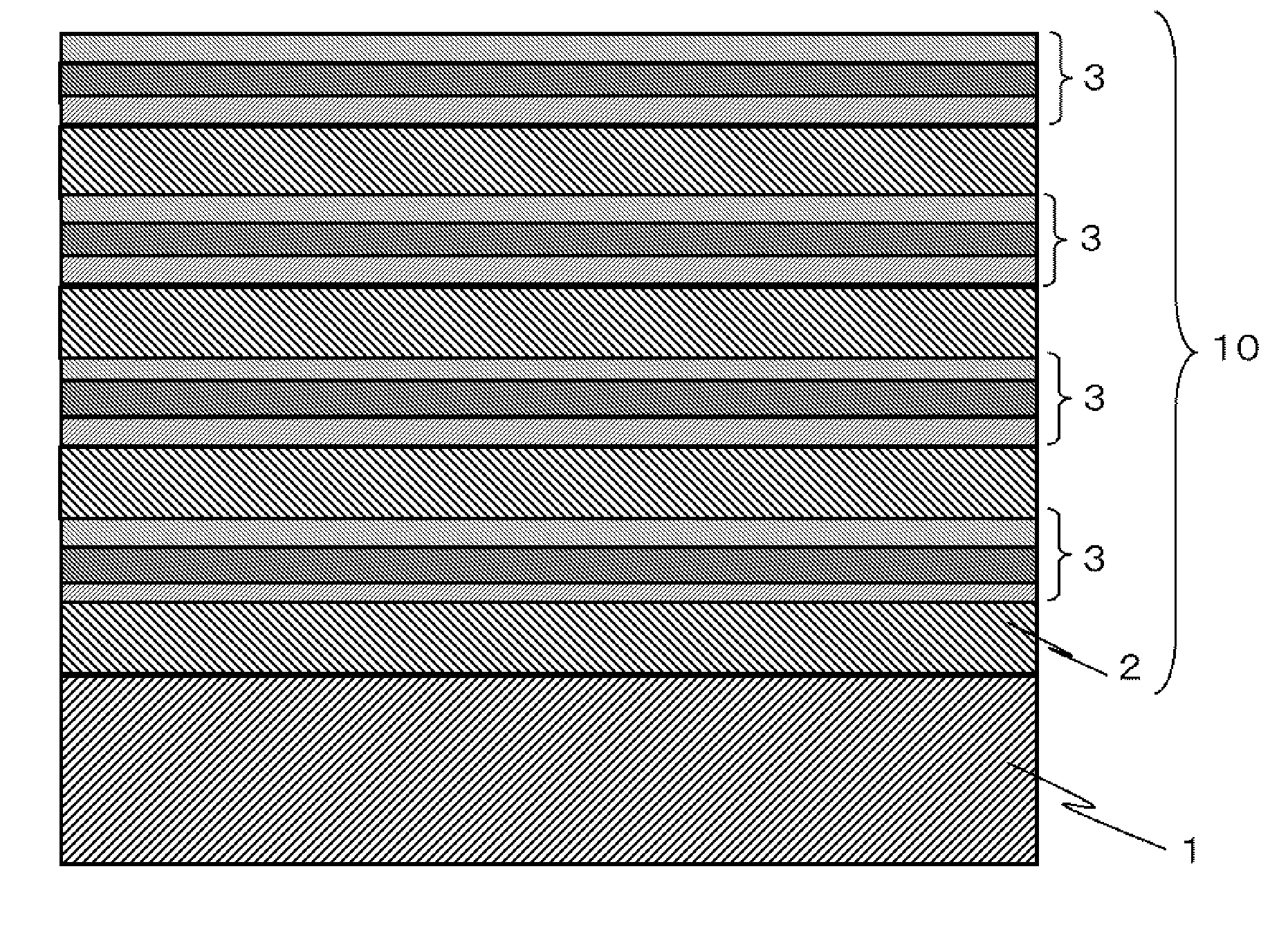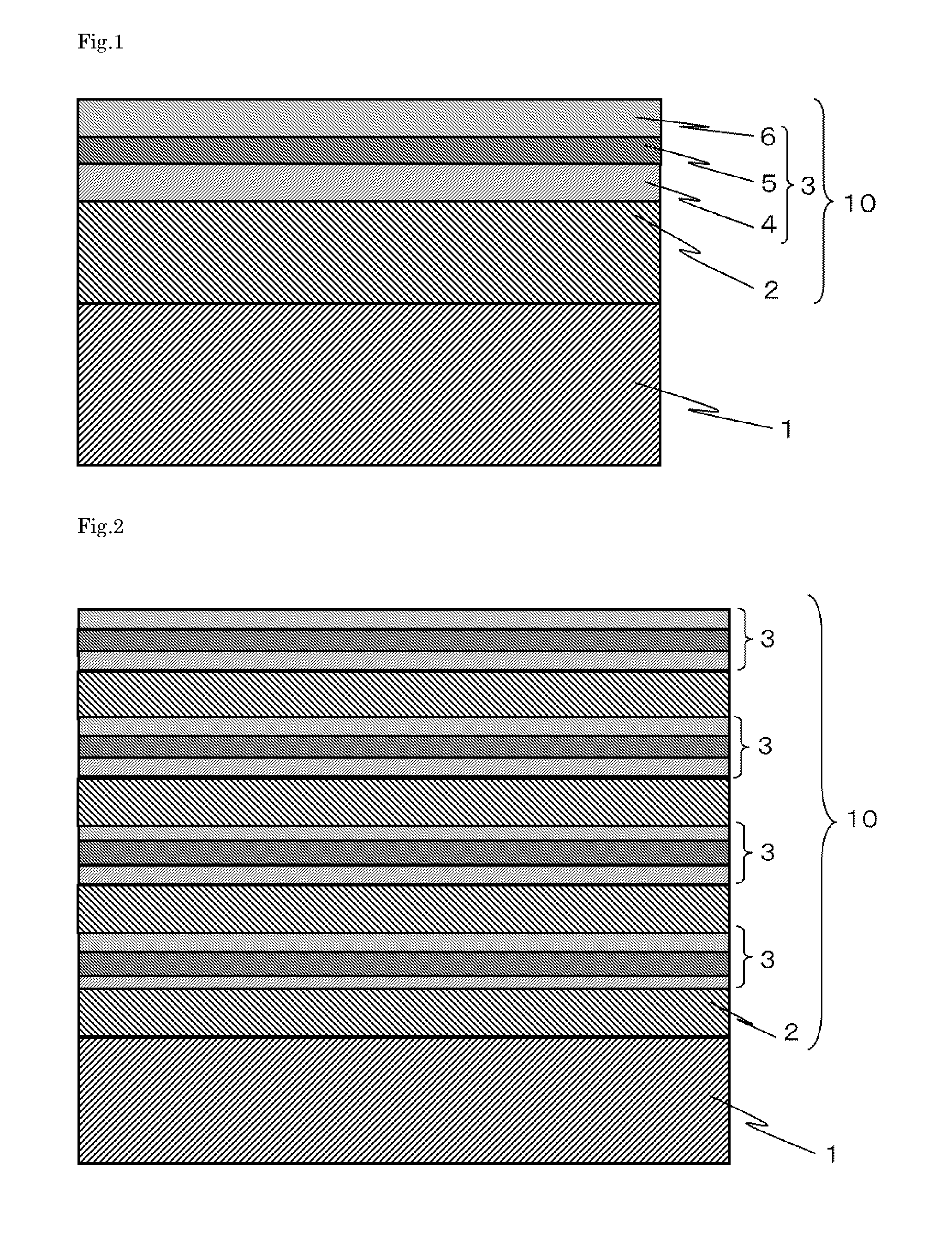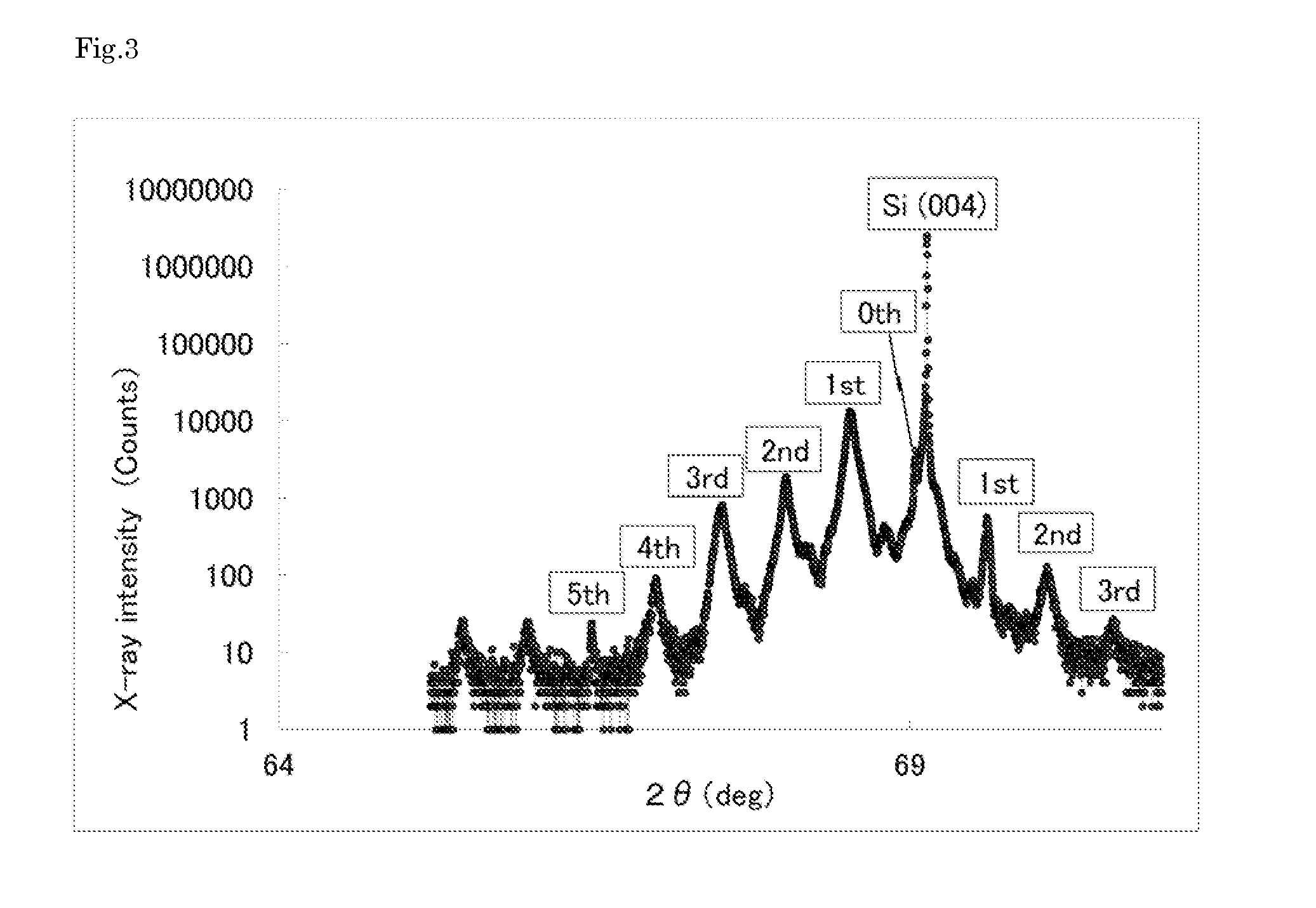Thermoelectric device
a technology of thermoelectric devices and electrons, applied in the direction of thermoelectric devices with peltier/seeback effect, basic electric elements, electric apparatus, etc., can solve the problem of difficulty in realizing a thermoelectric device having high power factor, and achieve the effect of increasing electron density, increasing power factor, and increasing electron density
- Summary
- Abstract
- Description
- Claims
- Application Information
AI Technical Summary
Benefits of technology
Problems solved by technology
Method used
Image
Examples
example 1
[0058]In Example 1, a sample exclusive for N-type thermoelectric evaluation was formed and evaluated, the sample having characteristics equivalent to those of the thermoelectric device 14 including the stacked thermoelectric thin film 10 according to the second embodiment and the carrier supply layer 5 being doped with Sb. First, the stacked thermoelectric thin film 10 was formed on the substrate 1.
[0059]A Si single crystal substrate was prepared as the substrate 1. The (100) plane of the substrate 1 was used as a deposition surface. The substrate 1 was washed at a high temperature with a concentrated liquid prepared by adding an alkali or acid to a hydrogen peroxide base and then washed with hydrofluoric acid.
[0060]The stacked thermoelectric thin film 10 was formed on the washed substrate 1. First, SiGe was deposited to form the first high-purity layer 2. The Si:Ge composition ratio was 80:20. The thickness of the SiGe layer was 10 nm.
[0061]Then, the composite carrier supply layer ...
example 2
[0063]In Example 1, the SiGeSb film formed by adding Sb to a SiGe film was deposited as the carrier supply layer 5. However, in Example 2, a SiGeB film was formed by substituting Sb with B, and a sample exclusive for P-type thermoelectric evaluation was formed and evaluated. With the exception of the additive, Example 2 was the same as Example 1.
example 3
[0075]In Example 3, as shown in Table 2, the carrier supply layer 5 including a SiGeSb film formed by adding Sb to a SiGe film had a thickness of 0.5 nm corresponding to the thickness of a monoatomic layer, and the thickness of each of the first high-purity layer 2, the second high-purity layer 4, and the third high-purity layer 6 was changed from 0.8 nm to 55 nm. The value of power factor S2σ in each of the stacked film configurations was confirmed. With the exception of the thicknesses, Example 3 was the same as Example 1. The contents shown in Table 2 reveal that when the thickness of each of the first high-purity layer 2, the second high-purity layer 4, and the third high-purity layer 6 is 1 nm or more and 50 nm or less, a particularly high value of power factor can be achieved.
TABLE 2First high-Second high-CarrierThird high-purity layerpurity layersupply layerpurity layerPowerSiGeSiSiGeSbSifactorthicknessthicknessthicknessthickness(μW / (nm)(nm)(nm)(nm)mK2)Ex-0.80.8Monoatomic0.83...
PUM
| Property | Measurement | Unit |
|---|---|---|
| thickness | aaaaa | aaaaa |
| thickness | aaaaa | aaaaa |
| thickness | aaaaa | aaaaa |
Abstract
Description
Claims
Application Information
 Login to View More
Login to View More - R&D
- Intellectual Property
- Life Sciences
- Materials
- Tech Scout
- Unparalleled Data Quality
- Higher Quality Content
- 60% Fewer Hallucinations
Browse by: Latest US Patents, China's latest patents, Technical Efficacy Thesaurus, Application Domain, Technology Topic, Popular Technical Reports.
© 2025 PatSnap. All rights reserved.Legal|Privacy policy|Modern Slavery Act Transparency Statement|Sitemap|About US| Contact US: help@patsnap.com



